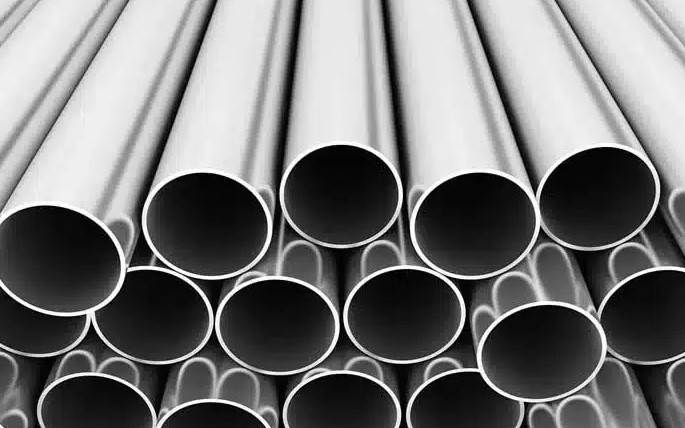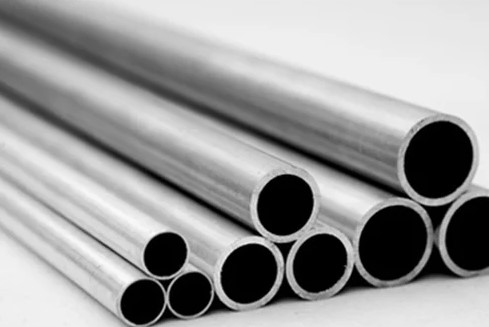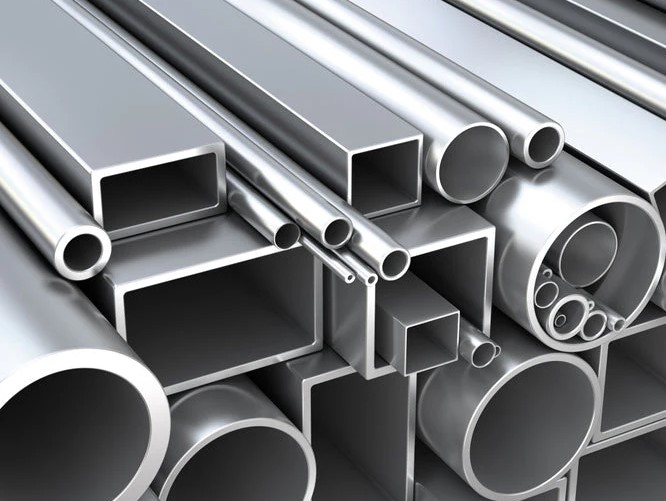Aluminum tube is a versatile material widely used across industries due to its lightweight, corrosion resistance, and strength-to-weight ratio. Whether in construction, automotive, aerospace, or manufacturing, aluminum tube provides an efficient solution for structural and fluid-handling applications. With a seamless finish and high malleability, it supports both aesthetic and functional purposes. Businesses looking for reliable supply chains prioritize aluminum tube for its recyclability and sustainability benefits. At Stavian Industrial Metal, we ensure that each product meets rigorous quality standards and global specifications, catering to both bulk industrial demands and customized projects.
Aluminum tube plays a crucial role in a wide range of industries, offering both structural support and functional design flexibility. At Stavian Industrial Metal, we have observed the growing demand for this material across sectors due to its unique physical and chemical characteristics.
In construction, aluminum tube is commonly used in frameworks, scaffolding, window frames, and curtain wall systems. Its lightweight nature reduces structural loads while still maintaining durability. Architects and engineers favor it for its aesthetic appeal and resistance to environmental conditions.
In the automotive and aerospace industries, aluminum tube contributes to weight reduction without compromising strength. This translates to better fuel efficiency and performance. Tubes are utilized in chassis components, engine parts, and fluid transfer systems. The non-corrosive nature of aluminum ensures longevity in demanding environments.
Other industries like furniture manufacturing, HVAC systems, and marine engineering also rely heavily on aluminum tube. Its formability allows easy customization, making it suitable for both mass production and tailored designs.
Readers learn more: Composite Aluminum Panels: Applications, Installation Tips, and Prices

Understanding the different types of aluminum tube helps businesses choose the right solution for their specific application. At Stavian Industrial Metal, we supply a wide array of tube types tailored to meet international standards and specialized needs.
Seamless tubes are manufactured through extrusion without any welded joints. This results in uniform strength along the entire length, ideal for high-pressure applications such as hydraulic systems and compressed gas distribution. Their smooth internal finish also enhances fluid flow efficiency.
Welded tubes are produced by forming and welding aluminum sheets. They are more cost-effective than seamless tubes and suitable for lower-pressure applications. Their versatility and availability in various shapes and sizes make them popular in architecture and furniture design.
Cold-drawn aluminum tubes undergo additional processing to refine their mechanical properties. This process improves dimensional tolerance and surface finish, which is essential in precision engineering and electronics.
Key features of these tubes include:
Choosing the right aluminum tube type involves evaluating mechanical demands, environmental exposure, and budget constraints.
Readers learn more: Explore Hot Rolled Sheet: Applications, Benefits & Insights

Selecting the appropriate aluminum alloy is critical for optimizing performance. Each alloy offers distinct mechanical properties, corrosion resistance, and workability. Stavian Industrial Metal offers expert guidance on alloy selection to match your operational requirements.
One of the most versatile and commonly used grades, 6061 offers excellent weldability, corrosion resistance, and strength. It’s suitable for structural applications, pipelines, and heavy-duty frames.
Known for its smooth surface finish and excellent anodizing qualities, 6063 is often used in architectural applications. It offers good corrosion resistance and moderate strength.
High in strength and fatigue resistance, 2024 is often used in aerospace structures. However, it has lower corrosion resistance and may require protective coatings.
This alloy is ideal for applications demanding the highest strength-to-weight performance, such as aircraft components and racing bikes. It has lower workability but superior mechanical properties.
Understanding the balance between formability, corrosion resistance, and strength allows our clients to make informed material decisions that align with performance expectations.
At Stavian Industrial Metal, we emphasize strict quality control at every stage of the aluminum tube manufacturing process to ensure product consistency and performance. The manufacturing journey typically begins with billet casting and proceeds through various forming techniques depending on the type of tube required.
Extrusion is the most common method for producing aluminum tube. A preheated billet is forced through a die to form the desired shape. This process allows for seamless tubes with excellent dimensional precision. Post-extrusion processes include stretching, straightening, and cutting to specified lengths.
For welded aluminum tube, flat aluminum sheets or coils are rolled and joined using TIG or laser welding. The seams are then tested for strength and leak-proof integrity. This method is ideal for producing large volumes with flexible design requirements.
Cold drawing is a refinement process where an extruded or welded tube is pulled through dies to improve surface finish, tolerance, and hardness. It’s a preferred method for applications requiring high precision and strength.
Throughout these steps, advanced non-destructive testing (NDT) methods such as ultrasonic inspection and eddy current testing are applied to detect imperfections and ensure compliance with international quality standards.

The longevity and aesthetics of aluminum tube can be significantly enhanced through various surface treatments. At Stavian Industrial Metal, we offer finishing services that align with your project specifications and environmental conditions.
Anodizing increases corrosion resistance, surface hardness, and enhances appearance. The process involves forming an oxide layer through an electrolytic passivation technique. This layer can be dyed in various colors, offering both protective and decorative benefits.
Powder coating adds a thick, uniform finish that resists scratches, UV exposure, and corrosion. It’s widely used in architectural and automotive sectors where visual appeal and durability are essential.
These mechanical finishes offer aesthetic refinement. Polishing gives a mirror-like shine, suitable for high-end furniture or appliances. Brushed finishes reduce glare and fingerprint visibility, commonly applied in kitchen equipment and railings.
Choosing the right surface treatment depends on the tube’s intended application, exposure conditions, and design goals.
Selecting a trustworthy supplier is critical for ensuring material quality, consistent supply, and technical support. As an established supplier, Stavian Industrial Metal outlines several essential factors to evaluate when choosing an aluminum tube partner.
Working with a knowledgeable supplier like Stavian Industrial Metal guarantees that your aluminum tube solutions are both cost-effective and technically superior.
Aluminum tube is not only a high-performance material but also aligns well with sustainable manufacturing and circular economy goals. At Stavian Industrial Metal, we actively promote the use of aluminum due to its strong environmental profile.
Aluminum is 100% recyclable without loss of properties. Recycled aluminum consumes only about 5% of the energy required for primary production. This significantly lowers the carbon footprint of projects utilizing aluminum tube.
Its lightweight nature reduces fuel consumption in transportation applications, contributing to lower emissions. In buildings, aluminum tube helps improve thermal efficiency in HVAC systems and façade designs.
The corrosion resistance of aluminum ensures longer service life with minimal maintenance, reducing the need for replacement and waste generation.
By choosing aluminum tube, industries are not only optimizing performance but also contributing to global sustainability goals and regulatory compliance.
Readers learn more
Steel Rebar D10: What Is It? Characteristics, Uses, Price
40×80 Aluminum Profile: Specifications and Latest Quotation
Aluminum Extruded Process, Benefits & Industrial Applications
Address
Website: https://stavianmetal.com
Email: info@stavianmetal.com
